Liverpool Catholic Cathedral
PILGRIMAGE UK: HOLY PLACES

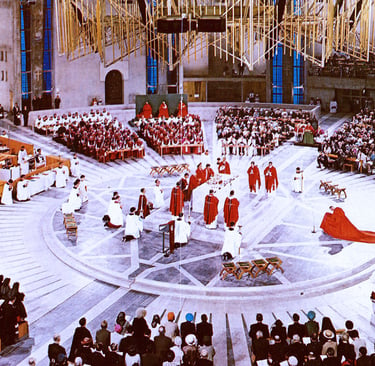
Liverpool Cathedral, an imposing structure that dominates the skyline of Liverpool, stands as a beacon of contemporary spirituality and architectural ingenuity. Its design, conceived by the renowned architect Sir Giles Gilbert Scott, is not only a testament to human creativity but also a living symbol of the Church’s call to illuminate the modern world with ancient truths. As one contemplates this magnificent cathedral, its soaring arches and expansive interior offer more than visual splendour—they invite an intimate reflection on the nature of faith, the beauty of worship, and the convergence of tradition with modern sensibilities.
Constructed over much of the twentieth century—from 1904 until its completion in 1978—Liverpool Cathedral is the largest cathedral in Britain and one of the most significant ecclesiastical buildings in the world. Its history is a rich tapestry woven from episodes of hope, struggle, and transformation. In its very stones, one can trace the evolution of a community determined to create a sacred space that speaks both to its historical roots and to the aspirations of modern congregations. The cathedral’s design marries the grandeur of Gothic Revival with modernist elements; its massive tower, reaching skyward at over 100 metres high, serves as a constant reminder of human aspiration and divine grandeur.
A walk through Liverpool Cathedral is akin to a pilgrimage through time. The visitor is immediately struck by the interplay of light and shadow within its vast interior. The soaring nave, with its lofty vaults and intricately designed stonework, directs one’s gaze towards the lifted high windows and colourful stained glass that filter streams of light into the sanctuary. These luminous patterns shift through the day, echoing the timeless message that divine illumination is both constant and ever-changing. The effect is reminiscent of the writings of theologians such as Hans Urs von Balthasar, who contended that beauty in worship is not ornamental, but rather a necessary conduit through which the sacred may be experienced.
Liverpool Cathedral is not merely a repository of prayers and memories but a dynamic space where art and liturgy intertwine. Every carved detail—from the decorative motifs along the arches to the inscriptions on its walls—whispers of a tradition that prizes the marriage of form and function. The architect’s bold vision was to create a building that would not only house worship but would itself be an act of worship—a physical manifestation of the Church’s enduring ministry in a modern society. In this respect, the cathedral stands as a powerful reminder of the biblical assertion that "the heavens declare the glory of God." Here, the interplay of architecture and light seems to echo that ancient hymn, inviting all who enter to reflect on the infinite grace that underpins creation.
The severe beauty of the cathedral is further enhanced by its setting. Overlooking the banks of the River Mersey, Liverpool Cathedral is part of a broader urban landscape that pulses with life and diversity. Yet amid the urban hum, the cathedral remains a space of profound tranquillity—a sanctuary where the chaos of modern existence is momentarily hushed by the reverent silence within its walls. The cathedral’s vast complex, with its adjoining chapels, refectory, and bell tower, serves not only as a centre for worship but also as a focal point for communal life. The sound of the tolling bells, which has echoed over the city for decades, calls the faithful to gather in a shared moment of reflection and prayer, reinforcing the idea that the Church is an enduring presence that unites diverse populations in common purpose.
For many, a visit to Liverpool Cathedral becomes a journey of personal renewal. The sheer scale of the building, alongside its meticulously maintained art and architecture, encourages visitors to pause and contemplate the mysteries of faith. Essays and sermons delivered within its walls often echo the sentiment that true worship is not confined to the rituals of procured ceremony, but is experienced in every moment of silence—a reflection made all the more poignant by the cathedral’s graceful assembly of stone and light. Within this majestic edifice, scholars and laypeople alike find inspiration in the Church’s commitment to fostering an environment where both reason and emotion are nurtured; a place where theological teaching is living tradition, inviting deep intellectual enquiry as well as heartfelt devotion.
The story of Liverpool Cathedral is interwoven with themes of resilience and hope. The construction, spanning much of the twentieth century, faced interruptions from both World Wars and economic challenges. Yet the perseverance of the community, combined with the visionary determination of Giles Gilbert Scott and his successors, ensured that the cathedral rose as a true work of art. Each generation contributed to its legacy, and today, the cathedral stands as a monument to the enduring belief that sacred spaces are not relics of a bygone era but vital instruments for engaging modern society with the mystery of divine love.
The architectural details of Liverpool Cathedral bespeak a profound sensitivity to the symbolic role that sacred spaces play within the spiritual life of a community. The design deliberately seeks to evoke a sense of awe while remaining accessible. It is a building that does not merely provide shelter for the faithful, but also invites them to participate in a sacred dialogue that spans centuries. In its lofty spires and elegantly arranged chapels, one can perceive the influence of theological reflections on church architecture—ideas that suggest that the very act of constructing a house of worship becomes a testimony to the divine mandate to offer beauty in the service of truth. This rich interplay between art, faith, and community reinforces the notion that every aspect of Liverpool Cathedral, from its record-breaking dimensions to its carefully curated liturgy, is an expression of the Church’s enduring mission.
Within the cathedral, specific areas hold particular significance. The Lady Chapel, for instance, stands as a quiet haven for meditation and prayer, its more subdued light a gentle counterpoint to the grandeur of the main nave. Here, the faithful can find solace, echoing the experiences of countless generations who have sought refuge in the nurturing embrace of the Church. In the refectory and educational spaces, the legacy of the building extends beyond mere architecture into the realm of community and learning—a reminder that the church continues to serve as a centre for spiritual formation and social engagement in modern times.
Moreover, Liverpool Cathedral’s role as a tourist and pilgrimage destination speaks to its ability to transcend the purely religious. Scholars of theology and art alike have noted that sacred architecture is a language without words—a language that speaks to the human soul through the silent testimony of its form, material and light. The cathedral’s awe-inspiring presence has been hailed by poets and historians alike as a modern-day equivalent of ancient sanctuaries, a place where the timeless truths of the Gospel are rendered in living stone. In this way, the cathedral not only facilitates a convergence of the historic and the contemporary but also invites visitors to consider the broader implications of what it means to create and inhabit a sacred space in today’s world.
For every visitor who steps through its grand doors, Liverpool Cathedral offers an opportunity to engage in a personal pilgrimage of the heart—a journey that is both an act of reverence and an invitation to renewal. As one walks along the long corridors, gazes up at the intricate vaulting, and listens to the solemn toll of its bells, there is a palpable sense of connection with all those who have come before, seeking the same transcendence. It is a place where even the quietest moment can evoke the profound mystery of God’s unfailing love, and where the rigour of sacred architecture meets the softness of the divine.
Liverpool Cathedral stands as a monumental expression of modern faith and classic devotion—a living testament to the power of sacred space to transform lives. Amid its soaring arches, radiant coloured glass, and cheerful yet resolute congregation, the cathedral invites every visitor to partake in a unique experience of spiritual reflection. It reminds us that, in the quiet interplay of light and shadow and the persistent hum of contemporary life, the eternal message of the Church continues to shine brightly. Here, in this vast and magnificent sanctuary, people from every walk of life are offered the chance to gather in hope, to be uplifted by beauty, and ultimately to find a deeper, more enduring connection with the divine.
Liverpool Cathedral, with its storied history and robust presence, exemplifies how faith can be forged in modern stone whilst still echoing the ancient call of sacred tradition. Its structure is not merely an architectural wonder but a spiritual haven, where the collective voices of the past and present harmonise, inviting all to worship the eternal.
Liverpool Cathedral: A Sacred Testament of Modern Faith and Timeless Architecture
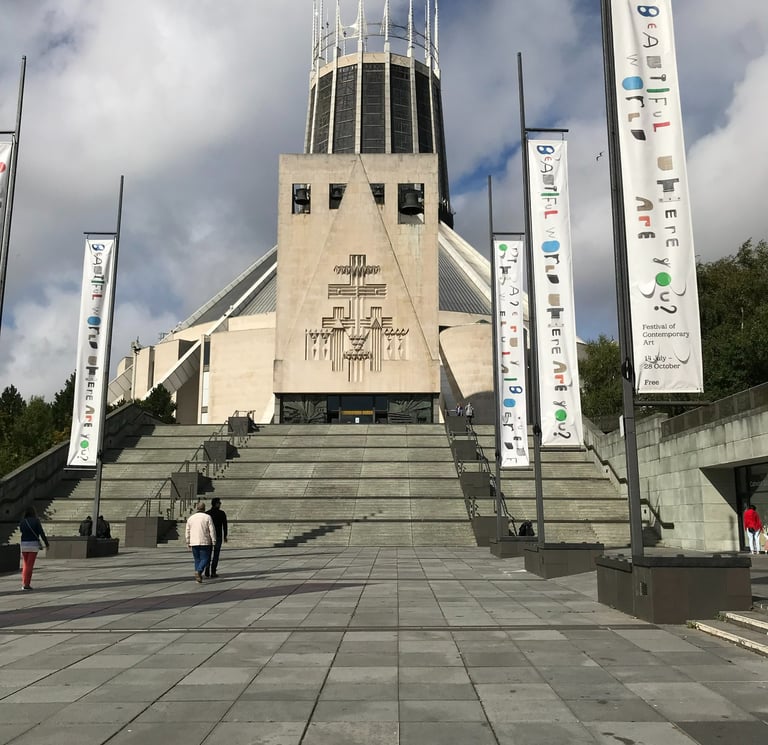


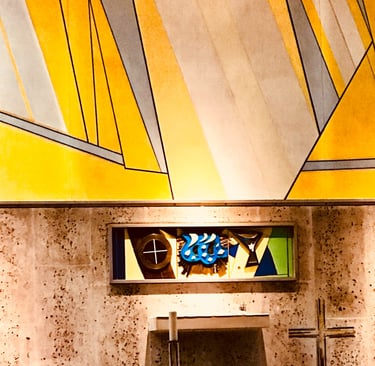

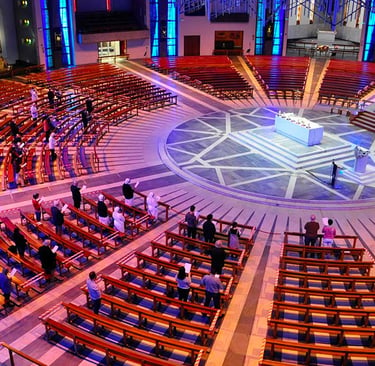

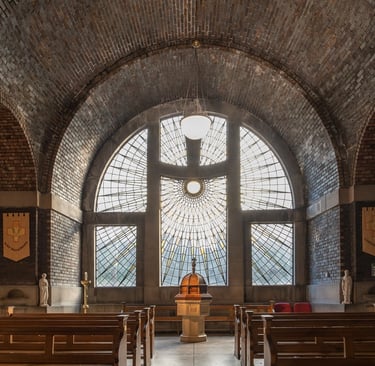
Ancient Apostolic Catholic Church
Embracing faith, inclusion, and compassionate service together.
ST THOMAS AQUINAS SEMINARY
© 2025. All rights reserved
QUICK LINKS
